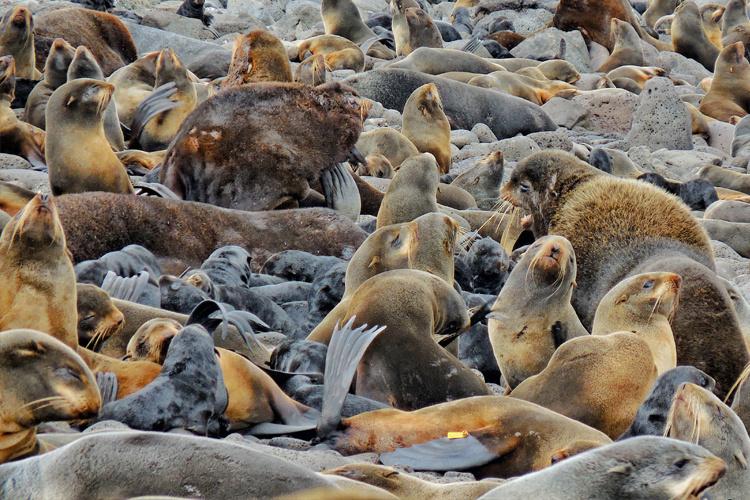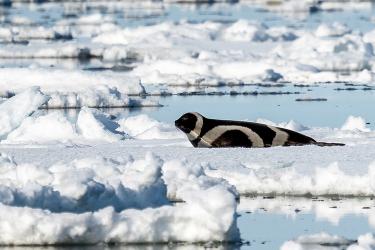
Researchers Jeremy Sterling (left) and Carey Kuhn (right) observing northern fur seals at Vostotchni rookery.
We’re half way through our field work capturing and tagging fur seals breeding on St. Paul Island, Alaska. We arrived on St. Paul on July 13 and after gathering our gear and doing basic upkeep to our equipment, we headed out to a northern fur seal rookery, or breeding site, last Thursday. We’re working at the northeast point of St. Paul Island, at the Vostochni rookery.
This site was chosen for a number of reasons. One consideration was the ability to maneuver around the terrain and groups of animals, which are called harems, with our capture gear.
The terrain also provides great cover to easily recapture the animals later in the season. The instruments we use to track the fur seals record and store all of the data so it’s necessary to recapture these animals to get a complete picture of their behavior over the summer breeding season.

Vostotchni rookery at the northeast point of St. Paul Island.
But the most important reason we chose Vostochni rookery is that we have good historical data on the fur seals that breed here. Based on previous studies we know that fur seals from northeast point generally feed north and northwest of the island on the Bering Shelf. This information helps us know where to direct the uncrewed Saildrones that will gather information about fur seals’ prey.
For this part of the study, there are three of us on the field team: Jeremy Sterling a colleague from the Marine Mammal Lab, John Skinner a volunteer who works for the Alaska Department of Fish and Game and me.
So far, we’ve captured and instrumented 17 females and we are aiming for 30. Each fur seal is equipped with a satellite-linked dive recorder that will measure dive behavior and provide at-sea location information. These data will be linked with the fish abundance data measured by the Saildrones to help us understand how prey availability influences fur seal behavior.
Check back next week for more updates and I’ll explain how we safely capture fur seals.
Meet the Bloggers

Carey Kuhn
Carey Kuhn is an ecologist at the Alaska Fisheries Science Center’s Marine Mammal Laboratory.
Carey joined the Lab’s Alaska Ecosystems program in 2007 after completing her Ph.D. at the University of California Santa Cruz.
Her research focuses on the at-sea behavior of northern fur seals.



